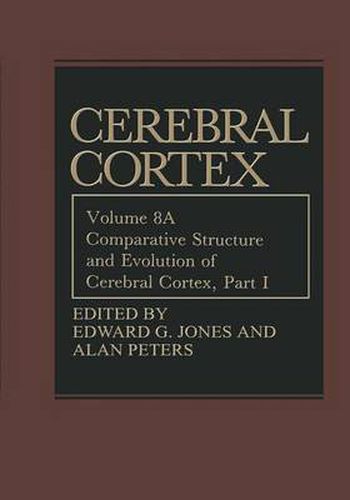Readings Newsletter
Become a Readings Member to make your shopping experience even easier.
Sign in or sign up for free!
You’re not far away from qualifying for FREE standard shipping within Australia
You’ve qualified for FREE standard shipping within Australia
The cart is loading…






This title is printed to order. This book may have been self-published. If so, we cannot guarantee the quality of the content. In the main most books will have gone through the editing process however some may not. We therefore suggest that you be aware of this before ordering this book. If in doubt check either the author or publisher’s details as we are unable to accept any returns unless they are faulty. Please contact us if you have any questions.
The cerebral cortex, especially that part customarily designated neocortex, is one of the hallmarks of mammalian evolution and reaches its greatest size, relatively speaking, and its widest structural diversity in the human brain. The evolution of this structure, as remarkable for the huge numbers of neurons that it contains as for the range of behaviors that it controls, has been of abiding interest to many generations of neuroscientists. Yet few theories of cortical evo lution have been proposed and none has stood the test of time. In particular, no theory has been successful in bridging the evolutionary gap that appears to exist between the pallium of nonmammalian vertebrates and the neocortex of mam mals. Undoubtedly this stems in large part from the rapid divergence of non mammalian and mammalian forms and the lack of contemporary species whose telencephalic wall can be seen as having transitional characteristics. The mono treme cortex, for example, is unquestionably mammalian in organization and that of no living reptile comes close to resembling it. Yet anatomists such as Ramon y Cajal, on examining the finer details of cortical structure, were struck by the similarities in neuronal form, particularly of the pyramidal cells, and their predisposition to laminar alignment shared by representatives of all vertebrate classes.
$9.00 standard shipping within Australia
FREE standard shipping within Australia for orders over $100.00
Express & International shipping calculated at checkout
This title is printed to order. This book may have been self-published. If so, we cannot guarantee the quality of the content. In the main most books will have gone through the editing process however some may not. We therefore suggest that you be aware of this before ordering this book. If in doubt check either the author or publisher’s details as we are unable to accept any returns unless they are faulty. Please contact us if you have any questions.
The cerebral cortex, especially that part customarily designated neocortex, is one of the hallmarks of mammalian evolution and reaches its greatest size, relatively speaking, and its widest structural diversity in the human brain. The evolution of this structure, as remarkable for the huge numbers of neurons that it contains as for the range of behaviors that it controls, has been of abiding interest to many generations of neuroscientists. Yet few theories of cortical evo lution have been proposed and none has stood the test of time. In particular, no theory has been successful in bridging the evolutionary gap that appears to exist between the pallium of nonmammalian vertebrates and the neocortex of mam mals. Undoubtedly this stems in large part from the rapid divergence of non mammalian and mammalian forms and the lack of contemporary species whose telencephalic wall can be seen as having transitional characteristics. The mono treme cortex, for example, is unquestionably mammalian in organization and that of no living reptile comes close to resembling it. Yet anatomists such as Ramon y Cajal, on examining the finer details of cortical structure, were struck by the similarities in neuronal form, particularly of the pyramidal cells, and their predisposition to laminar alignment shared by representatives of all vertebrate classes.